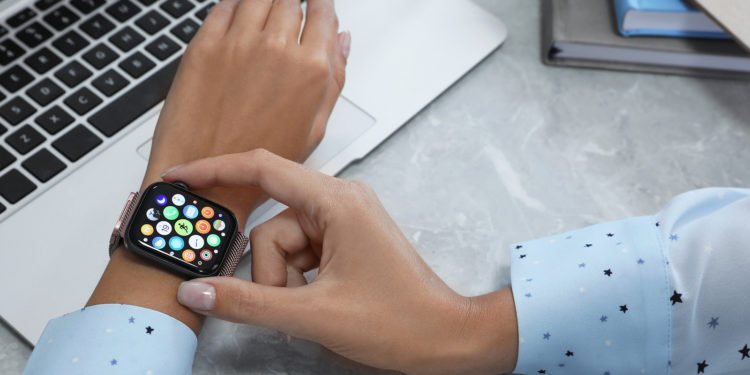Apple is researching how to equip an Apple Watch with Touch ID and a camera under the display. This is revealed by two newly published patent applications.
The first patent granted by the US Patent and Trademark Office is entitled title “Electronic device with biometric sensing system with sealed button.” In short, the Apple patent describes how a Touch ID scanner could be integrated into the side button of an Apple Watch and what practical purposes it could serve:
Apple Watch: Touch ID is long overdue
The processor may use biometric identification for one of several purposes, such as identifying the user, unlocking the device, and authorizing applications.
The use of Touch ID in the Apple Watch is long overdue. Currently, users have to enter a code when necessary. Biometric authentication would allow Apple to guarantee Apple Watch users a higher level of security when they put the device on or make an Apple Pay transaction. The implementation is very similar to the power button-based Touch ID sensor introduced on the fourth generation iPad Air. Here, too, the technology has shown itself to take up less space over time and Apple remains interested in it.
Apple Watch: Camera under the display?
The second patent, which was confirmed just recently, is titled "Electronic devices with dual-layer displays." It shows how a display can be layered to contain a camera and flash that are only visible from the outside when needed. The dual-layer display technology would also work on other devices like the iPhone, thus eliminating the notch. Interestingly, however, the patent focuses on the Apple Watch. The technology basically works thanks to a pixel array for displaying images and an outer layer with an array of light modulator cells that can become transparent or block the light. Some of these cells "can be put into a transparent mode to form a window" to allow the camera to work.
Technology could also improve battery life
When images are to be taken, the control circuitry in the electronic device can temporarily put the shutter into a transparent mode to allow light from a flash and/or light imaged by the camera to pass through.
This dual-layer display solution has the added benefit of allowing each layer to react differently. For example, one layer could be used for videos or animations while another is used to display static images or text. Using this technology could also improve the battery life of the Apple Watch. In essence, both Apple patents are very exciting. But as always, the same applies here - in the end, the whole thing could remain just an idea. (Photo by New Africa / Bigstockphoto)




